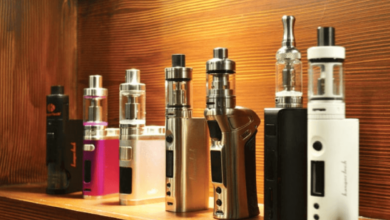Everything You Need to Know About Ultrasound Guided Breast Biopsy

Breast cancer is the most common cancer among women worldwide, and early detection is essential for successful treatment. One of the methods used to diagnose breast abnormalities and detect cancerous cells is an ultrasound-guided breast biopsy. This minimally invasive procedure has become increasingly popular due to its accuracy in identifying abnormal tissues while reducing unnecessary surgeries. In this blog post, we will provide you with everything you need to know about ultrasound-guided breast biopsies – from what they are, why they are done, how they are performed, risks and complications associated with them, preparation needed before the procedure, and recovery after the biopsy. So sit back and read on to learn more about this life-saving diagnostic tool!
What is an Ultrasound Guided Breast Biopsy?
An ultrasound-guided breast biopsy is a medical procedure that allows doctors to examine and remove tissue samples from the breast area. This minimally invasive technique involves using high-frequency sound waves to create detailed images of internal structures, which help guide the biopsy needle accurately.
Ultrasound-guided biopsies are typically done when an abnormality is detected on a mammogram, physical exam, or other imaging tests like MRI or CT scans. The test can determine whether the lump in the breast is cancerous or not.
The procedure itself usually takes less than an hour and requires local anesthesia. During the biopsy, you will lie on your back with your arm raised above your head. The doctor will then clean and numb the area where they’ll make a small incision before inserting a thin needle through it.
Once inserted, they will use ultrasound guidance to navigate towards the abnormal tissue while monitoring its movement live on screen until reaching their target site for removal of tissues that may be sent to pathology for further examination.
An ultrasound-guided breast biopsy is considered both safe and effective in diagnosing potential cancers early enough so treatment may begin promptly if needed.
Why is an Ultrasound Guided Breast Biopsy Done?
Ultrasound Guided Breast Biopsy is done to help diagnose breast abnormalities that are detected during a mammogram or ultrasound. These abnormalities can include lumps, masses, and changes in the structure of the breast tissue.
A biopsy helps to determine whether the abnormality is cancerous or non-cancerous. It also provides important information about the type of cancer present in case it is cancerous.
Doctors recommend an Ultrasound Guided Breast Biopsy when they find a suspicious area on a mammogram or ultrasound that cannot be easily seen with an unaided eye. They may also recommend this procedure if there are unusual symptoms like nipple discharge, skin puckering or thickening, pain in breasts etc., even without any visible lump.
It’s important for women who have undergone Ultrasound Guided Breast Biopsy to understand that not all biopsies lead to a diagnosis of breast cancer. In fact, most biopsies turn out to be benign (non-cancerous). Nonetheless, it’s always better to get checked as early detection leads to timely treatment and higher chances of recovery.
How is an Ultrasound Guided Breast Biopsy Performed?
During an ultrasound-guided breast biopsy, the patient lies down on their back with their arm raised above the head. The radiologist administers a local anesthesia to numb the area of interest.
The radiologist then uses an ultrasound machine and gel to locate the lump or abnormality in the breast tissue. A small incision is made in the skin, and a needle attached to a syringe is inserted through this incision towards the targeted tissue mass.
Once positioned correctly within range of sight under ultrasound guidance, multiple samples are taken through suctioning with varying degrees of pressure exertion. These specimens are collected into sample vials for laboratory testing.
After collecting enough samples from different regions around the lump, all needles are removed from the body followed by gentle compression on top of biopsy site using gauze pads or bandages until any bleeding stops.
An X-ray may also be taken after completion of specimen collection as additional confirmation that no core-needle fragments remain within biopsy region requiring post-biopsy follow-up imaging studies.
Risks and Complications Associated with Ultrasound Guided Breast Biopsies
As with any medical procedure, there are potential risks and complications associated with ultrasound guided breast biopsies. While these procedures are generally considered safe and have a low risk of complications, it’s important to be aware of the possible risks.
One common complication is bleeding at the biopsy site. This can cause swelling, bruising, or even require additional medical attention if the bleeding is severe. In some cases, infection may also occur at the biopsy site.
Another possible complication is damage to surrounding tissue. While rare, accidental puncture of nearby organs or blood vessels could occur during the procedure.
In very rare instances, a patient may have an allergic reaction to local anesthesia used during the biopsy. Symptoms such as hives or difficulty breathing should be reported immediately to medical professionals.
It’s essential for patients to discuss all potential risks and complications with their healthcare provider before undergoing an ultrasound guided breast biopsy. By being informed and prepared, patients can make educated decisions about their health care while minimizing potential risks associated with this type of procedure.
Preparation for an Ultrasound Guided Breast Biopsy
Preparation for an Ultrasound Guided Breast Biopsy is crucial to ensure that the procedure goes smoothly and accurately. Before the biopsy, you will be asked to change into a hospital gown and lie down on your back with your arm raised above your head.
It is important to inform your doctor if you are taking any blood-thinning medications or have any bleeding disorders as these can increase the risk of bleeding during the procedure. You may be asked to stop taking these medications prior to the biopsy.
You should also avoid wearing jewelry, especially around the neck area, as it might interfere with imaging. Your doctor may ask you not to eat or drink anything for several hours before the procedure.
During preparation, it’s essential that you tell your doctor about any allergies that you have. This includes food allergies or allergic reactions from previous medical procedures because sometimes contrast dye may be used in an ultrasound-guided breast biopsy.
Make sure to arrange transportation home after the biopsy as driving immediately following could pose a safety risk due to potential sedation used during this procedure. With proper preparation measures taken care of beforehand, patients can feel more comfortable and relaxed when undergoing an Ultrasound Guided Breast Biopsy.
Recovery After an Ultrasound Guided Breast Biopsy
In summary, an ultrasound-guided breast biopsy is a safe and effective procedure that can accurately diagnose breast abnormalities. It involves minimal discomfort and has a low risk of complications.
After the procedure, you may experience some mild bruising or swelling in the area for a few days. You should avoid strenuous activities such as heavy lifting or exercise for at least 24 hours following the biopsy.
It’s important to follow your doctor’s instructions carefully and attend any necessary follow-up appointments to ensure proper healing and monitoring of your condition.
Remember, early detection is key when it comes to breast cancer. If you have any concerns about changes in your breasts, don’t hesitate to talk with your doctor about scheduling an ultrasound-guided breast biopsy or other diagnostic tests. With prompt attention and care, you can take control of your health and well-being.




